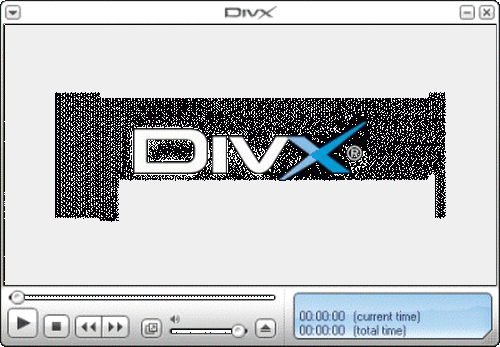Today we write this guide especially for the latest codec H.265/HEVC codec. There several parts about the H.265 we should learn one by one in details. Additionally, we also provide the best ways to play or convert H.265 videos for further enjoyment (like VLC and DivX player). Are you interested in this H.265 workflow?
Part 1.Definition of H.265/HEVC codec
Part 2.Development of H.265
Part 3.Supported containers for H.265/HEVC
Part 4.Suitable players for watching H.265 videos
Part 5.Best H.265 Converters for working H.265/HEVC files

Part 1. What does this new H.265/HEVC exactly mean?
H.265, High Efficiency Video Coding (HEVC) is the latest generation video compression standard. This standard was developed by the ISO/IEC Moving Picture Experts Group (MPEG) and ITU-T Video Coding Experts Group (VCEG), through their Joint Collaborative Team on Video Coding (JCT-VC). HEVC is also known as ISO/IEC 23008-2 MPEG-H Part 2 and ITU-T H.265. It provides superior video quality and up to twice the data compression as the previous standard (H.264/MPEG-4 AVC). HEVC can support 8K Ultra High Definition video, with a picture size up to 8192×4320 pixels. In a word, higher quality smaller size, that’s the advantage H.265 brings to us!
Part 2.How does this H.265 codec walk into our eyesight?
In 2004, ITU-T Video Coding Expert Group (VCEG) started the development of the successor to the codec H.264 and in 2007 ISO/IEC Moving Picture Expert Group (MPEG) started their journey to the same direction. In 2010, the MPEG and VCEG teams collaborated on a joint Call for Proposals and established the Joint Collaborative Team on Video Coding (JCT-VC) to develop the HEVC standard. On January 25, 2013 the technical content of HEVC was finalized and on April 13, 2013 it was formally declared as a standard.
Part 3.Which containers at present can support the H.265 well?
Searched on line, you will find there are several kinds of containers that can handle H.265 well, just as follows:
1.MPEG transport stream – used by ATSC, DVB and Blu-ray Disc. File name extension of this container is .ts, .tsv, .tsa.
2.MPEG media transport – an under development digital container standard.
3.ISO based media file format –used as the basis for other media file format. File name extensions are .mp4, .3gp, .3g2, .mj2, .dvb, .dcf, .m21
4.Matroska – an open standard free container format. File name extensions like .mkv, .mk3d, .mka, .mks
Part 4. How to play H.265 videos smoothly?
A: DivX Player

DivX player is another robust HEVC video file player. It is an award winning software that offers HEVC playback. It offers high-quality playback of movies, TV shows. It supports almost all the popular formats like AVI, DIVX, MKV, MP4 and more. By using its DivX Media Server one can stream music, video and photos to any DLNA-compatible device at home like PS3, XBOX, or Samsung Galaxy line of product. With the Stream To feature in player user can also control which device they can stream their videos to.
B: VLC Media Player

Another player that can play HEVC file is the VLC Media Player, which is a free and open source player and framework. It supports a wide range of multimedia files. It can also play DVDs and various streaming protocols. This player is absolutely free with no spyware, no ads and no user tracking.
Part 5. Best H.265/HEVC Converter offered for you
Cause we all know that H.265 is not yet accepted by most video programs so it is necessary for us to convert H.264 to other common ones. Fortunately, after this upgraded version to 4.8.2.0, Pavtube Studio has three main videos converters that can all handle the H.265 videos well (Learn more)!
- Easy operation and concise interface
- Various videos for input and output
- Multiple functional items for setting and editing videos
- 3D videos also supported well
- H.265 encode and decode can be supported now
- Different H.264 codec standards are offered
- Faster conversion speed with no ads and batched apps
Step1. Load your H.265/HEVC videos firstly.
Download and launch the Pavtube H.265 HD Video Converter and the main interface will pop up there in front of us. With the ‘Add video’ button on the left corner, we can easily load videos in individual clips. Or with the ‘Add from folder’ to let your H.265 source files in as complete folder. Directly drag your files is also available.
Step 2. Choose the output format
The output selection in this program is the outstanding highlight. There are so many output choices for converting your H.265 footage. No matter for editing tools, FCP, iMovie, Avid, Adobe, etc or media devices like QuickTime, Tablet,etc. Here we make the H.264 MP4 as the common example. In the ‘Common Video’ ->’H.264 Baseline/Main/High Profile Video(*.mp4) could be the best.
Step 3. Edit your H.265 videos for a nice sharing – Optional
For some advanced users, except for converting the original videos, they also have the requirements of adjusting output videos. Tap the ‘Edit’ on the top of the main interface, we can choose the ‘Trim’ to decide the video length, ‘Crop’ to remove the extra edges, or something else there. You are deserved to have a try.
Finally, complete your conversion of H.265/HEVC videos? Just go back to the main interface, click the big red button ‘Convert’, with a faster speed, it won’t take us so much time to wait for the result. Just enjoy your new H.265 videos!














Every weekend i used to visit this web page, as i wish for enjoyment, as this this site conations genuinely
good funny information too.